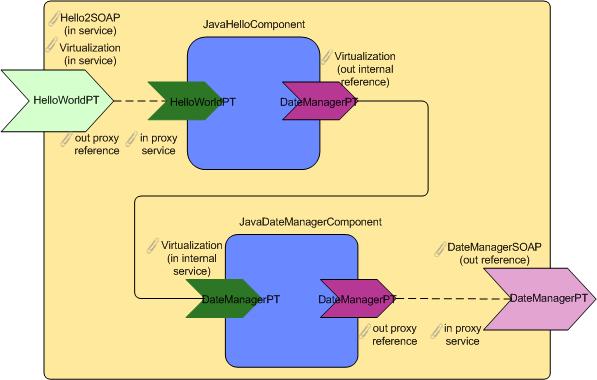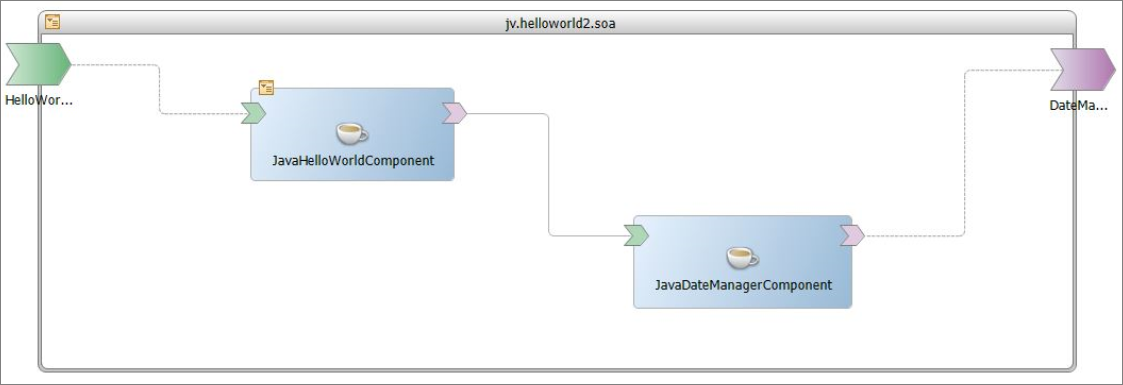Bindings
A Binding specifies how communication happens between a Reference and a Service. A Service Binding describes the mechanism a client uses to access a Service. A Reference Binding describes the access mechanism a Reference uses to invoke a Service. References can have at most one Binding.
Virtualization Bindings connect Services and References to the Messaging Bus. Virtualization Bindings are automatically created for every Composite Service and every wired component Service and Reference. At design-time, Virtualization Bindings of Component Services and References are implicit; their properties cannot be viewed.
There are two types of Virtualization Bindings: internal and external. An internal binding is associated with a Component Service or Reference. An external binding is associated with a Service or Reference promoted to the root composite. Administrators can create or modify wires connected to external bindings and can monitor, start, and stop external bindings.
The following figure, Bindings are indicated by a
 icon. The promoted Service HelloWorldPT has a SOAP and external Virtualization Binding. The Components have internal Virtualization bindings. The promoted reference DateManagerPT has a SOAP binding. In addition, any time a Service or Reference has a binding of type other than Virtualization, a pair of proxy (Virtualization) bindings are created to connect the Service or Reference to the Component to which the Service or Reference Service is wired.
icon. The promoted Service HelloWorldPT has a SOAP and external Virtualization Binding. The Components have internal Virtualization bindings. The promoted reference DateManagerPT has a SOAP binding. In addition, any time a Service or Reference has a binding of type other than Virtualization, a pair of proxy (Virtualization) bindings are created to connect the Service or Reference to the Component to which the Service or Reference Service is wired.
This figure is a representation of the TIBCO_HOME/samples/java/helloworld2.zip sample in the installation. You can run the sample to get a better understanding of the Bindings.


